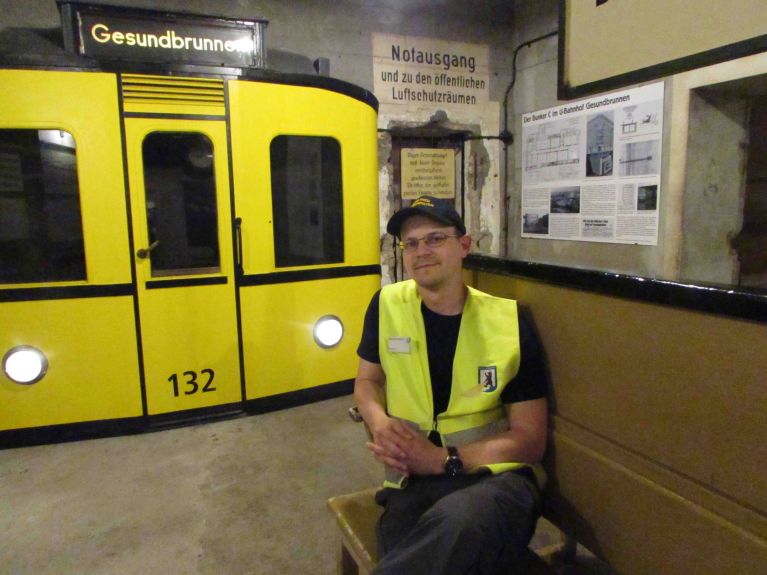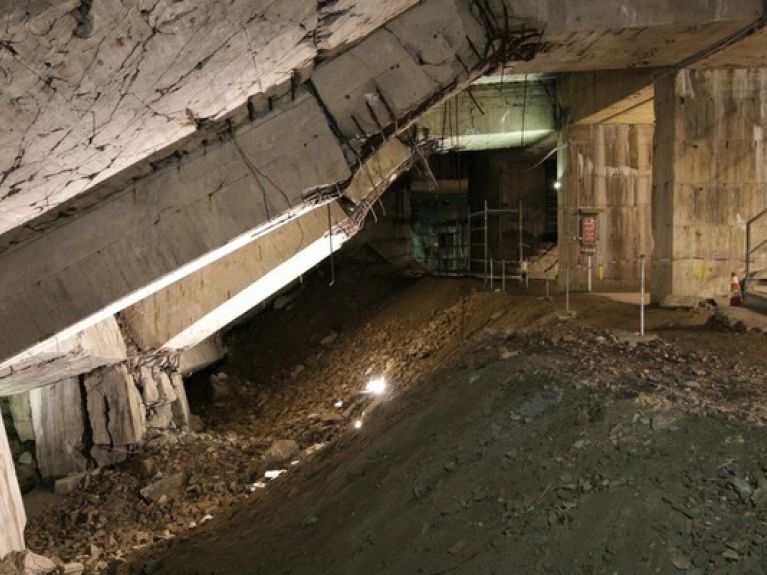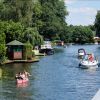Berlin's dark side: tracking down history underground
Nick Snipes from the US takes visitors on tours of the Berlin Underworlds, as well as studying history at Freie Universität.

Mr Snipes, let’s talk about the Berlin Underworlds. What kind of experience can people expect?
Our association is giving people a tour of Berlin’s secret history. Some of the tours pass through original World War II air-raid shelters and Cold War nuclear shelters. The atmosphere – it’s cold, dark and narrow – makes a lasting impression on many visitors. We also address current debates, such as the possibility that such shelters are reactivated. Other tours are dedicated to escape attempts and the so-called ghost stations that were the result of the division of Germany. At the time, trains from West Berlin would cross through parts of East Berlin without stopping, and the stations were closed off, guarded and bricked up. We use original photos, reports from contemporary witnesses and historic items to enable people to experience this period of time.
Which places do you find particularly impressive?
The flak tower in the Humboldthain park is a remarkable experience. The structure was built during World War II for air and civil defence purposes. It was so massively built that the French tried to blow it up three times after the end of the war, but half of it is still standing. We explore the inside of the tower on our tours: huge halls and metres-thick concrete walls. The tunnel in the Dresdener Strasse in Kreuzberg makes for a very different experience. The original plan had been to build an underground station, but the project was never realised. Half of the structure was used as an air-raid shelter, and the other half was a special shelter for mothers and children. Part of it is now below groundwater level. Visitors who take part in our “Tour D Special” are equipped with waders for wading through the cool water.

What makes Berlin’s underworlds particularly interesting for visitors from the US and Canada?
Visitors from North America tend to have a different perspective than their European counterparts. In the USA, teaching of World War II in schools tends to focus more on the Pacific Theatre while our European guests have more of an Eurocentric perspective of the war. Since our guests on the English speaking tours have such a diverse background, I often do not know how familiar they are with issues such as the division of Germany or air-raid protection in European cities. However, we do aim to offer our guests potentially new information and views of such events. Our tours not only open up new perspectives, but the form in which the information is shared through first-hand encounters with the historical space is also unique. Rather than standing in front of display cases, our guests are moving through original spaces with us. Many don’t just want to hear about history, they want to feel it: the confinement, the darkness, and the silence. Equally impressive are the personal stories, such as those told during our tour about escape attempts through tunnels under the Berlin Wall. Among other things, we show a tunnel from 1970/71 that is still in place and was dug by a small team of people in West Berlin, aiming to help people from the East. The Stasi discovered the tunnel just before it was completed, and the last few metres remain visible to this day. Many of those escape helpers have shared their memories with us. Their voices and perspectives are part of the tour, allowing our guests an immediate experience of this place and time.
Berlin was an obvious choice for me: two world wars, the division of the city and country, the Cold War, its reunification, it’s a place with a very dense history.
What is your connection to Berlin and Germany?
I am from a small town in North Carolina, and during my studies in the US, I focused on German history, and the 20th century in particular, which I find very fascinating because of all the ruptures and complexity. In my bachelor’s thesis, I wrote about filmmakers and actors who were active in the Weimar Republic and forced to flee into exile by the National Socialists. I’ve lived in Berlin since 2019 and am doing a master's programme in Public History at the Freie Universität. Berlin was an obvious choice for me: two world wars, the division of the city and country, the Cold War, its reunification, it’s a place with a very dense history. I think of Berlin as the centre of the 20th century – in Germany and beyond.
What made you decide to start working as a guide for the Berlin Underworlds?
I had to do an internship as part of my studies. So I applied with the Berlin Underworlds and did a two-month internship. After I had completed this, I was allowed to do tours myself. I have now worked as a guide for two years. What I find particularly exciting about my work is the wide range of people I get to meet. In museums and the academic sphere, historians tend to just talk to each other, but here I get to speak to people who may be having their first direct encounter with a historical topic. They give me immediate feedback and I adapt my tours to each group of visitors. This exchange makes my work very agile, and that makes me steadily develop the ways in which I share information.


